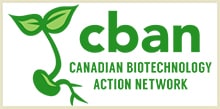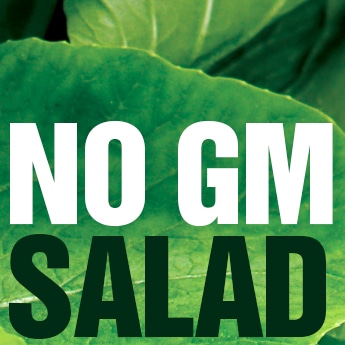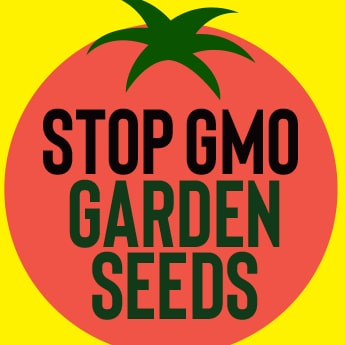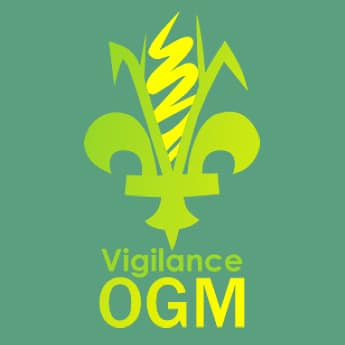GM Alfalfa in Canada – Update and Background – April 5, 2016
Contact: Lucy Sharratt, Coordinator, Canadian Biotechnology Action Network, 613 241 2267 ext. 25 coordinator@cban.ca
In April 2013, the first-ever GM alfalfa varieties (with Monsanto’s herbicide tolerant trait called Roundup Ready) were registered in Canada (after having been approved as safe in 2005). In December 2014, GM low-lignin alfalfa varieties were also approved and registered in Canada. Some GM alfalfa was planted in Eastern Canada in 2015 in on-farm field trials (with 20 farmers in Ontario and Quebec)[1] However, genetically modified (GM) alfalfa seeds have not being sold in Canada – until now.
GM alfalfa seeds have been sold for limited Spring 2016 planting in Eastern Canada
- In a March 9, 2016 letter, the company Forage Genetics International (FGI) provided an “update on our future plans” and said, “at this time, FGI is considering the potential for Spring 2016 commercial seed sales of HarvXtra™ alfalfa with Roundup Ready® Technology in eastern Canada (Ontario, Quebec, New Brunswick, Nova Scotia, Prince Edward Island, Newfoundland) only.”[2]
- A March 2016 “stakeholders update” from FGI (posted on Monsanto’s website on March 29) said that the company would sell GM alfalfa seeds for spring 2016 planting in Eastern Canada. FGI said, “Expected seed quantities will be limited in 2016 but are estimated to be sufficient to plant a small, targeted launch of less than 5,000 acres of hay.”[3]
- An April 1, 2016 article in Better Farming magazine reported from an email from Mike Paterson of FGI that the seeds had been sold and most of the product would be planted in Ontario and Quebec.[4]
The industry’s development of (highly unrealistic) “Coexistence Plans” is faltering
The risk of contamination from GM alfalfa is widely acknowledged and is a source of opposition to its introduction, so the industry has developed the public relations strategy of “coexistence plans” to attempt to address these concerns. The Canadian Seed Trade Association (CSTA) has been working to develop coexistence plans that include Best Management Practices (BMPs) for farmers to follow. The plans have been roundly critiqued, including in the CSTA meeting to develop the plan.[5]
An Eastern Canada “coexistence plan” was published in 2013.[6] This plan does not however consider the use of the GM low-lignin trait. According to FGI, the GM low lignin trait in alfalfa “offers more flexibility in cutting schedule” – “provides unprecedented flexibility by widening cutting windows” – “gives growers the option to…Delay harvest for 7-10 days for increased yield potential, without sacrificing forage quality.”[7] However, the coexistence plan for Eastern Canada (developed before the low-lignin trait was approved) lays out the BMP to “Harvest GM alfalfa stands at 10% bloom.” The plan includes the footnote: “This provision will need to be re-assessed as new GM traits enter the approval and commercialization process” however this reassessment has not been conducted.
While the CSTA is also developing a coexistence plan for Western Canada, FGI says it does not have current plans to sell seeds in the West: “The plan for Western Canada is in response to requests for additional stewardship actions that address the possibility of product moving from Ontario/Quebec to Western Canada.”[8] The coexistence plan was due to be finalized in January/February of 2016 however, despite the lack of a Western plan as of April 1st, FGI has introduced GM alfalfa into Eastern Canada.
GM alfalfa contamination in the US and Canada is reported
A December 2015 US Department of Agriculture (USDA) study found that, of roadside sites with feral alfalfa that were surveyed in California, Idaho and Washington state, 27% were contaminatedntaminated with GM alfalfa. [9] The study did not look for causes – both seed spillage and pollinators are possible – but confirms that genetically modified alfalfa has dispersed into the environment, beyond cultivated fields. What makes the high contamination rate so remarkable is how little GM alfalfa produced it: The USDA approved Roundup Ready alfalfa in 2005 and it occupied just 1% of national alfalfa acreage in 2006. A federal court prohibited new plantings in 2007 until 2011, but allowed what had already been planted to remain in the ground (an alfalfa stand is typically grown for about five years). Because this study was conducted just a few months after the re-approval of GM alfalfa in 2011, all of the feral GM alfalfa detected arose from the comparatively few fields planted in 2005 and 2006.[10]
A February 29, 2016 article in Alberta Farm Express reported that a batch of foundation alfalfa seed contaminated with the GM Roundup Ready trait was sent to a forage seed grower in southern Alberta four years ago.[11] Forage Genetics International was informed of the contamination and placed blame on US seed companies.
Alberta municipalities and counties have voted for no GM alfalfa in the province
On March 15, 2016, the Alberta Association of Municipal Districts and Counties (AAMDC) passed a resolution to work with different levels of government and companies, “to prevent the introduction of genetically modified/engineered alfalfa to the province of Alberta until there is a marketplace and consumer acceptance in Alberta’s export markets including China, Japan, the European Union, and the Middle East.”[12] The resolution recognized that many of Alberta’s forage seed producers sell products into countries that forbid the import of genetically modified alfalfa products and that GM alfalfa release will pose a serious threat to the province’s forage seed exports as well as export hay, feed supplements and alfalfa sprouts for human consumption. The resolution also called the federal government to task for not doing “a quantified government economic impact assessment on the effects of genetically modified/engineered alfalfa on Canadian export markets.”
The alfalfa has stacked GM traits for glyphosate tolerance and low-lignin
The GM alfalfa seeds use Monsanto’s GM traits that are licensed to the company Forage Genetics International. FGI is marketing alfalfa with the GM traits for low-lignin and glyphosate tolerance together: these two GM traits will only will be sold together (stacked) in the one plant. FGI’s low-lignin alfalfa is trademarked as HarvXtra™: “How will HarvXtra™ alfalfa be sold?: HarvXtra™ alfalfa will be stacked with Roundup Ready® Technology.”[13] The GM low-lignin alfalfa is designed to produce less of one type of lignin, a substance that makes plant cell walls stiff. It would extend the hay-cutting period into the 20%-50% flower bloom stage, without loss of palatability or nutrition for animal feed[14] – it is designed so that mature alfalfa plants would be less “stalky” even if harvested later when the alfalfa plants are older and larger.
Resources
- The Inevitability of Contamination from GM Alfalfa Release in Ontario, Canadian Biotechnology Action Network, April 2013. https://cban.ca/content/view/full/1523
- The Canadian Seed Trade Association’s so-called “Coexistence Plan” is a gateway to GM alfalfa contamination, National Farmers Union and Canadian Biotechnology Action Network, July 2013. https://cban.ca/content/view/full/1751
- www.cban.ca/alfalfa
[1] Where’s the GM alfalfa? Julie McNabb, Germination. September 24, 2015. http://germination.ca/wheres-the-gm-alfalfa/
[2] Forage Genetics International, March 9 2016, posted at https://cban.ca/content/view/full/2166
[3] Forage Genetics International, Stakeholder Update, March 2016, http://www.monsanto.ca/newsviews/Pages/SU-2016-03-29.aspx
[4] Glyphosate-tolerant alfalfa debuts in Eastern Canada, Better Farming. April 1, 2016. http://www.betterfarming.com/online-news/glyphosate-tolerant-alfalfa-debuts-eastern-canada-61379
[5] Rob Wallbridge, The Fanning Mill blog, September 14, 2013. http://thefanningmill.com/2013/09/14/gm-alfalfa-coexistence-the-seed-industrys-strange-alchemy/
[6] Canadian Seed Trade Association, Coexistence Plan for Alfalfa Hay in Eastern Canada: Planning for Choice http://cdnseed.org/wp-content/uploads/2014/10/CSTA_CoExist_brochure_EN_web.pdf
[7] Forage Genetics International, HarvXtra™ with Roundup Ready® Technology, FAQs http://www.harvxtra.com/resources/faqs.html
[8] Where’s the GM alfalfa? Julie McNabb, Germination. September 24, 2015. http://germination.ca/wheres-the-gm-alfalfa/
[9] Greene SL, Kesoju SR, Martin RC, Kramer M (2015) Occurrence of Transgenic Feral Alfalfa (Medicago sativa subsp. sativa L.) in Alfalfa Seed Production Areas in the United States.
[10] Monsanto’s Genetically Engineered Alfalfa has Gone Wild, Bill Freese, Center for Food Safety. January 21, 2016. http://ecowatch.com/2016/01/21/gmo-alfalfa-gone-wild/
[11] Alexis Keinlen and Glenn Cheater, GM Alfalfa May Already be in Alberta, Alberta Farm Express. February 29, 2016. http://www.albertafarmexpress.ca/2016/02/29/exclusive-gm-alfalfa-may-already-be-in-alberta/
[12]Alberta Association Of Municipal Districts & Counties (AAMDC), Resolutions Database, http://www.aamdc.com/advocacy/resolutions-resources/resolutions/details/1/801?tmpl=component&iframe=1&print=1
[13] Forage Genetics International, HarvXtra™ with Roundup Ready® Technology, FAQs http://www.harvxtra.com/resources/faqs.html
[14] National Farmers Union, Submission to the Canadian Food Inspection Agency re GM Low Lignin Alfalfa, July 17, 2013 http://www.nfu.ca/story/nfu-submission-re-gm-low-lignin-alfalfa





